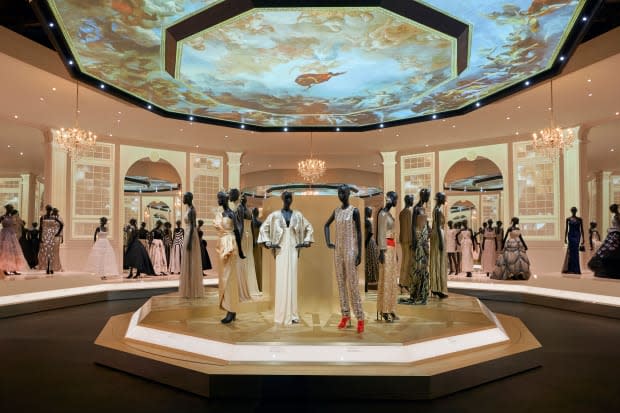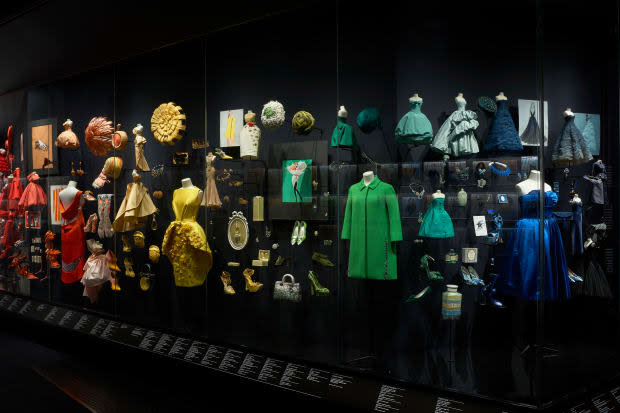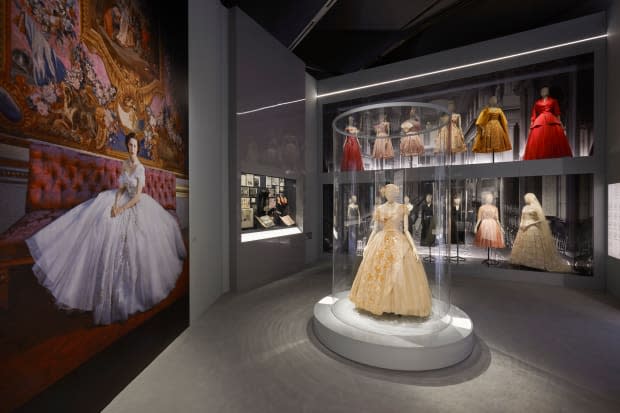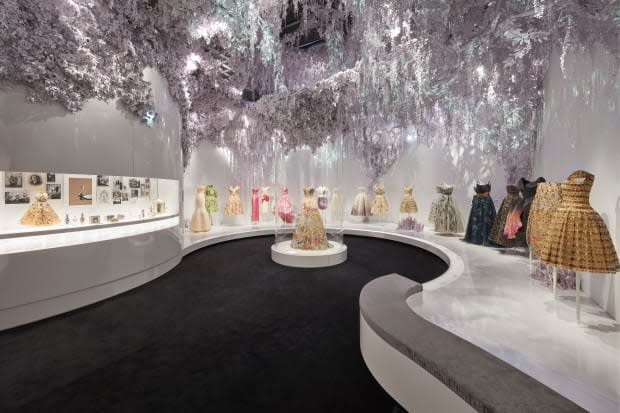The Christian Dior Exhibit at London's Victoria & Albert Museum Is 2019's Must-See Hit
"Christian Dior: Designer of Dreams" expands on last year's couture exhibition in Paris, charting the brand's history from 1947 to present day.

Every so often a fashion exhibition comes along that turns the museum world on its head, reminding the public of clothing's place in art history. The last one so memorable was 2011's "Alexander McQueen: Savage Beauty," which toured from New York to London, garnering mass publicity along the way.
Come February 2, London's Victoria & Albert museum will lay claim to 2019's title with the opening of "Christian Dior: Designer of Dreams." Expanding on last year's Paris couture exhibition ("Christian Dior: Couturier du Reve") the V&A has extended the offering by a whopping 60 percent, making this the largest, most in-depth look into the house of Dior to date in the U.K., with over 500 pieces and 200 couture gowns alone.
As is to be expected, it charts the brand's history from 1947 to present day, celebrating the life and works of Christian Dior and his six (actually seven, but more on that later) subsequent successors to the helm of the house. In a novel twist by V&A curator Oriole Cullen, the exhibition also explores Dior's special relationship with Britain, revealing the U.K. to have played a surprisingly large part in what could be considered the most "French" brand on earth.

Of course, taking such a deep look at one fashion house's evolution, it also serves as a case study for the changing nature of the industry. By viewing the collections through the lens of a historian, audiences are able to clearly see exactly how different of a climate each creative director has been faced with. We are reminded that in 1947, following his famed first show, 10,000 women attended a week-long preview at Harrods of the second collection. This proves the immediate mass obsession with Dior, as the world eagerly anticipated the revelation of what they'd wear that season. As he presented, he dictated how they'd dress and how they'd want to look for the next six months, thus changing the zeitgeist with each new collection.
Fast forward 70 years, looking at Maria Grazia Chiuri's tenure at the house, the exhibition notes remind us that designers these days must be careful to toe the line "between appropriation and appreciation of cultures." It's an interesting note, not only proving the modernity and careful consideration of the exhibition, but also the contrast in environments in which Chiuri and Dior led the house, respectively. It's doubtful that Dior himself had to consider such ideals when taking inspiration from India, Mexico or Egypt, nor did he likely face the vast commercial pressure so famously bestowed upon Raf Simons during his tenure.

A tour of the exhibit begins with Dior's birth in 1905, leading into the inception of the house. Scattered throughout are rarely-seen personal effects, like family photographs of Dior's younger sister Catherine (the namesake behind the famed Miss Dior perfume), a telegram announcing his death in 1957 and even the passports of the in-house models, littered with a stamp for every country in which Dior showed.
The founder is proven an Anglophile in the next room, exploring his connection to Britain with the original dress made for Princess Margaret to wear on her 21st birthday, footage of a 1950 show at the Savoy hotel and a history of C.D. Models, Dior's first ready-to-wear arm, founded in London.
Subsequent sections are divided into Travel, Garden and Historicism to show the common themes of the house, as interpreted by each of Dior's successors (Yves Saint Laurent, Marc Bohan, Gianfranco Ferre, John Galliano, Raf Simons and Maria Grazia Chiuri). The garden room is particularly notable for its design: Lilac blooms spill from the ceiling, reminiscent of Simons's inaugural Fall 2012 couture show, immortalized in the documentary "Dior and I".

The true show-stopper of the exhibit is the final section: The Ballroom. In a nod to Dior's Avenue Montaigne headquarters, white wood-panelling whisks us to Paris, in a swirling, glittering setting. Twinkling lights are projected across the floor, walls and ceilings to give a 360 degree experience transforming the room from day to night in a matter of minutes. It's a fitting showcase for a brand that's the living embodiment of ballgowns, and here they are given a truly glamorous stage. A Spring 2015 couture dress sits next to a 1956 number, both in gold silk and adorned with Swarovski crystals; there is no way of telling they're not from the same collection, as they look as though they could have come down the runway one after the other. It's a true testament to the power of the curation — an edit that's been done so carefully through thousands of dresses in the archive, to show the power of the brand through its common threads.
Perhaps we are biased, but we couldn't help but feel that Simons's most memorable pieces were missing from the exhibit. Where were the shocking pink skirts with white T-shirts from his first collection, or the bejeweled trousers from couture? Finally, it might have been kind to give a nod to Bill Gaytten, the embattled second-in-command who was thrown into the spotlight for a brief stint as creative director after John Galliano's infamous firing. Gaytten may have only held the reins for two short seasons, but was surely deserving of a mention. But then, this is a celebration of the best of Dior, and they're unlikely to dwell on a dark PR moment in their history. That said, this exhibit is PR at its finest: An awe-inspiring, show-stopping veritable Dior extravaganza.
"Christian Dior: Designer of Dreams" runs at the V&A from Feb. 2-Jul. 14. You can purchase tickets here.
Sign up for our daily newsletter and get the latest industry news in your inbox every day.
